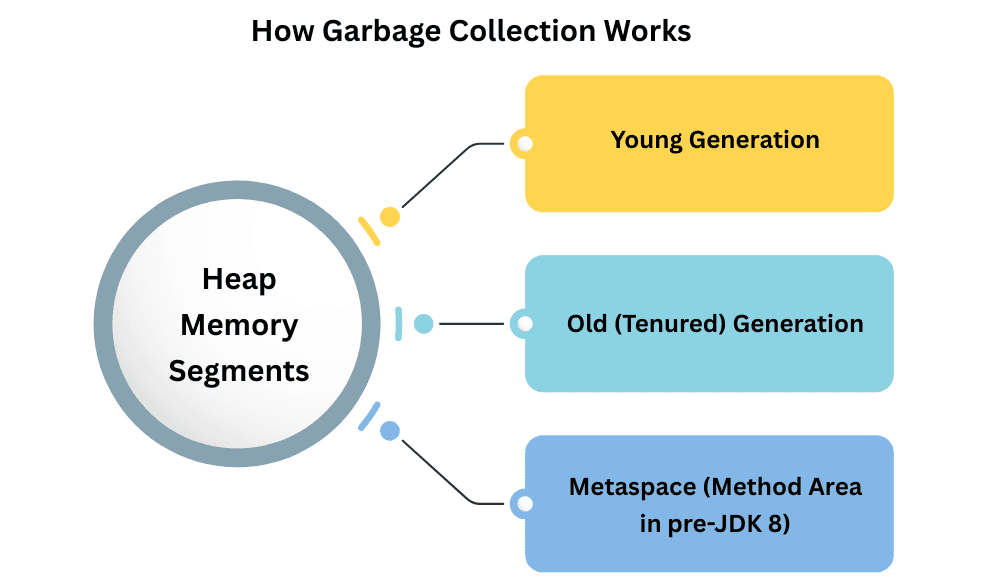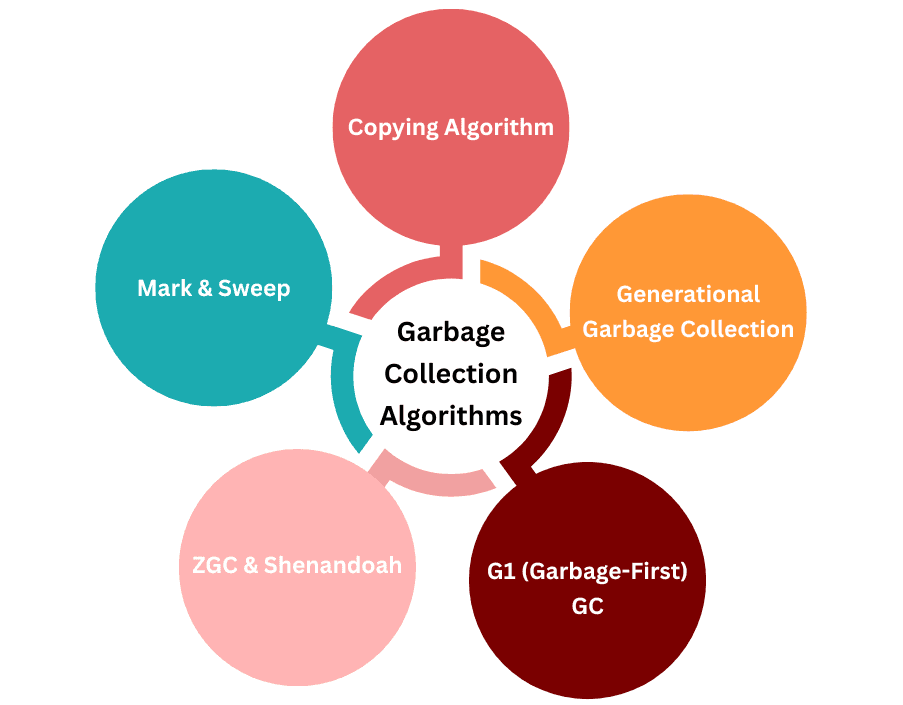Garbage Collection Mechanism in Java
Garbage Collection (GC) in Java is an automatic memory management process provided by the JVM. It helps reclaim memory by removing objects that are no longer needed, ensuring efficient use of heap memory and preventing memory leaks.
What is Garbage Collection?
Garbage Collection is the process of automatically freeing memory by deleting objects that are no longer reachable or referenced by the application.
- Objects become eligible for GC when there are no live references pointing to them.
- This allows developers to avoid manual memory management unlike languages such as C/C++.
How Garbage Collection Works
Heap Memory Segments
The heap is divided into multiple generations to optimize garbage collection:

- Young Generation
- Contains short-lived objects (e.g., temporary variables).
- Further divided into Eden Space and Survivor Spaces (S0 & S1).
- Frequent garbage collection called Minor GC occurs here.
- Old (Tenured) Generation
- Contains long-lived objects that survived multiple Minor GCs.
- Garbage collection here is called Major GC or Full GC.
- Metaspace (Method Area in pre-JDK 8)
- Stores class metadata, static variables, and constant pools.
- Managed separately from object heap.
Garbage Collection Process
- JVM identifies unreachable objects (no references).
- Marks these objects for deletion.
- Reclaims memory and compacts the heap if necessary.
Garbage Collection Algorithms

- Mark & Sweep
- Marks reachable objects and sweeps (removes) the unmarked objects.
- Copying Algorithm
- Copies live objects to another memory space, leaving garbage behind.
- Used in Young Generation.
- Generational Garbage Collection
- Optimizes GC by separating short-lived and long-lived objects.
- G1 (Garbage-First) GC
- Focuses on collecting regions with most garbage first.
- Improves pause times in large heaps.
- ZGC & Shenandoah
- Low-latency GCs suitable for large-scale applications.
- Aim for concurrent and pause-free collection.
Finalization (Deprecated Concept)
finalize()method allowed cleanup before an object was garbage collected.- Deprecated in modern Java because it was unpredictable and performance heavy.
References & Object Types
- Strong References → Normal object references (prevent GC).
- Soft References → Cleared only when memory is low.
- Weak References → Eligible for GC during the next cycle.
- Phantom References → Track objects after finalization for cleanup.
Best Practices for Garbage Collection
- Avoid unnecessary object creation.
- Use local variables to reduce object lifespan.
- Nullify references if objects are no longer needed.
- Prefer automatic resource management (try-with-resources).
- Choose appropriate GC algorithm for your application type.
Points to remember :
- Garbage Collection is automatic, reducing developer overhead.
- Optimized for heap efficiency and application performance.
- Modern GCs like G1, ZGC, and Shenandoah handle large applications with minimal pause times.

